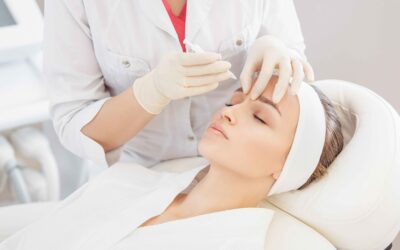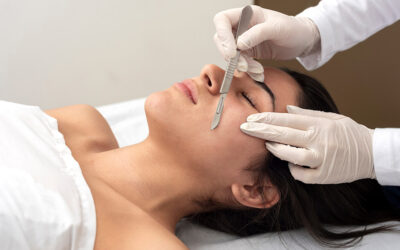If you have been diagnosed with basal or squamous cell carcinoma, you are dealing with two of the most common forms of skin cancer. When treated early each of these skin cancers is easily curable. If ignored, skin cancer can progress, spreading to the point where it can cause disfigurement. Often after a biopsy the “tip of the iceberg” or the very top portion of the skin cancer disappears making the skin once again appear normal. Do not be fooled – under the skin the majority of the skin cancer is still growing and will continue to do so until it is completely removed. No matter what, you want it gone. The most precise and effective way of removing skin cancer and preventing its recurrence is a technique called Mohs surgery. Although it has been refined considerably since its conception in 1936 by its founder Frederic Mohs, this is a technique that has been utilized for 80+ years and is bar none the very best.
Who are Mohs Surgeons?
It is important as well to ensure that you are choosing a “fellowship-trained” Mohs surgeon when considering this technique. Fellows of the American College of Mohs Surgery, such as Dr. Richards, go through an extensive fellowship above and beyond dermatology residency training that teaches them not only the Mohs technique, but also how to elegantly repair Mohs defects allowing for the best cosmetic result. When looking for a Mohs surgeon, therefore, it is important to ask your physician if he or she did a Mohs fellowship and whether he or she is a member of the American College of Mohs Surgery.
What’s the Story Behind Mohs Surgery?
Mohs surgery is an extremely precise form of surgery that allows skin cancers to be carefully and completely removed in a step by step fashion. Skin sections are gradually removed from the patient’s skin cancer, brought to our in-house lab and are processed into a microscopic slide. Special stains are then used to illuminate the cancer cells making it much easier to see them under the microscope. Being able to see cancer cells clearly under the microscope prevents “guessing” at how much of a margin to take to ensure the cancer is gone. The Mohs technique is the only technique that provides the assurance that all the cancer is gone while still preserving normal skin because there is no guess work as to what to remove. If you want the peace of mind that comes with knowing the skin cancer was thoroughly removed but normal skin was preserved, Mohs surgery is the best option for you.
What Happens After the Procedure is Over?
Once the skin cancer is removed, Dr. Richards then considers the very best technique for repairing the Mohs defect. This could be allowing the wound to heal on its own, closing the defect side to side or placing a flap or a graft. It is important to carefully consider these options so that the very best cosmetic result can be achieved for the patient. Once the cosmetic repair is complete, the stitches generally will come out in 10 days. Patients leave with a dressing over their repaired site and extensive instructions on how to care for the area. Sometimes an antibiotic is prescribed and rarely a pain pill to ensure the patient is comfortable at home. Once stitches are removed, patients are asked to visit the office on a quarterly basis in the first year for full skin checks. It is important that we keep a close eye on our Mohs surgery patients to make sure that new skin cancers aren’t appearing on other parts of the body. Often we will see a new cancer appearing in a new site within the first year of the last surgery so prevention is key. If you see any new lesions that are bleeding or growing rapidly, be sure to contact our office.
Find Out More Information About Mohs Surgery
If you have been informed that you have basal cell or squamous cell carcinoma, review your options for removal. Talk to our fellowship-trained Mohs surgeon, Dr. Richards, at Torrey Pines Dermatology & Laser Center in La Jolla about whether Mohs surgery would be the most effective choice for you. Having the peace of mind afforded by choosing Mohs surgery makes it well worth going through the procedure. Our office serves the San Diego and surrounding areas. Contact us today to schedule a consultation to learn more.




